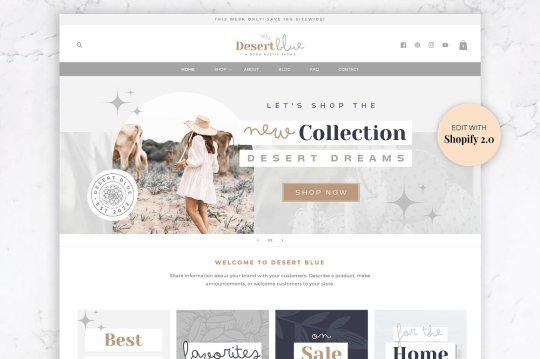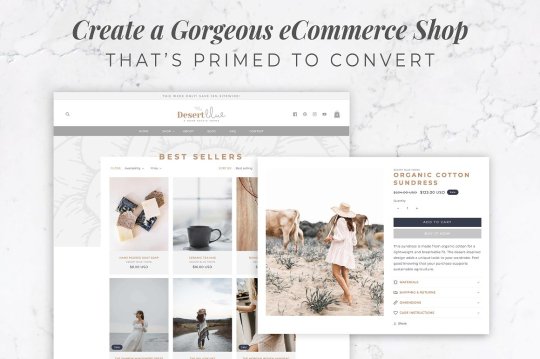#Shopify Store Customization
Explore tagged Tumblr posts
Text
Shopify Store Creation: A Step-by-Step Guide
#Shopify store setup#E-commerce website development#Online store creation#Shopify website design#Shopify store customization#E-commerce platform selection#Shopify store management#Online business setup#Dropshipping with Shopify#Shopify SEO optimization#Shopify payment integration#Shopify theme development#Shopify app installation#Social media marketing for Shopify#Shopify store promotion
8 notes
·
View notes
Text
Professional Shopify Developer in Vancouver – Wisertech Solutions Looking to build or enhance your eCommerce store? Wisertech Solutions is your trusted Shopify development partner in Vancouver. We specialize in creating stunning, feature-rich online stores tailored to meet your business needs.
Our Shopify services include:
Shopify Store Setup & Configuration
Custom Theme Design
Store Customization & Integration
SEO Optimization for Higher Visibility
Data Migration from Other Platforms
Maintenance, Support & Upgrades
With years of domain expertise, our Shopify developers deliver professional solutions on time and adhere to coding standards, ensuring top performance for your online store. We enhance Shopify’s built-in SEO features to help your site rank higher on Google, driving more traffic and increasing sales.
For a custom Shopify store that sets you apart from competitors, contact Wisertech Solutions today!
#Shopify Developer Vancouver#Shopify Development Services#eCommerce Solutions Vancouver#Shopify Store Setup#Custom Shopify Themes#Shopify SEO Optimization#Shopify Data Migration#Shopify Store Customization#Vancouver eCommerce Developer#Professional Shopify Development#Shopify Integration Services#Online Store Development Vancouver#Shopify Maintenance and Support#Shopify Experts Vancouver#Shopify Web Design Services
0 notes
Text
Shopify Marketing Agency | Digital Marketing Expert for your Shopify Store | Apex Web Zone
Apex Web Zone has been marketing Shopify websites since its inception a few years back. Marketing on Shopify E-commerce Development is an E-commerce solution that empowers successful Shopify Stores. Apex Web Zone is one of the worlds top Shopify marketing company.
#Shopify development services#E-commerce website design#Shopify marketing strategies#Online store optimization#Shopify store customization#E-commerce SEO services#Shopify app development#Digital marketing for Shopify
0 notes
Text
0 notes
Text



Shopify Theme Desert Blue
Shopify is an amazing, easy to use platform to manage and grow your eCommerce shop. Butttt popular Shopify theme marketplaces often provide hard to use templates with WAY too many options. Do ya reallllly need 34 different home page layouts to choose from?
This gorgeous template features our boho Desert Blue aesthetic, which is a gorgeous, chill aesthetic featuring bold text with handwritten accents, perfect for displaying an array of products.
If you're newer to Shopify, just don't want to spend hours trying to customize a tricky theme with WAY too many options, or pay a designer to put together your Shopify eCommerce store, this theme is for you! You don't need any coding knowledge, and you can create the graphics for your website right in Canva for FREE using our pre-created templates. Download Link: https://psdmonsters.com/shopify-theme-desert-blue/
#Shopify#Shopify Theme#Shopify Template#Shopify Design#Shopify Customization#Website Template#Web Theme#Ecommerce Templates#Ecommerce Website#Ecommerce Themes#Online Store#Online Shop#Website Design#Canva Website#Canva Template#Web Design#Business Website#Small Business Website#Feminine Website#Boho Website#Bohemian Website#Boutique Store#Web Design Template#Blue Website#Grey Website
2 notes
·
View notes
Text
Shopify vs. Wix in 2024: Customization, Flexibility, and Growth Potential
🚀 Shopify vs. Wix in 2024: Which e-commerce platform is right for your business? From customization and flexibility to growth potential, we break it all down for you! 📈 Discover the winner in our latest comparison. 💡 #Ecommerce #Shopify #Wix #BusinessG
In today’s dynamic e-commerce landscape, selecting the right platform is crucial for your business’s success. Shopify and Wix are two of the most popular choices, each bringing its unique strengths to the table. But as we move into 2024, how do they stack up in terms of customization, flexibility, and growth potential? In this blog post, we’ll dive deep into these three key areas to help you…
#business scalability#e-commerce growth#e-commerce platforms#online store customization#Shopify 2024#Shopify vs Wix#Shopify vs Wix comparison.#Wix 2024
3 notes
·
View notes
Text
Explore the advantages and disadvantages of using Shopify for dropshipping in 2024. Learn about Shopify's user-friendly interface, customization options, and scalability, along with considerations such as cost, transaction fees, and competition. Consider hiring Webgarh Solutions for expert Shopify dropshipping store development services to maximize your e-commerce success.
#shopify#dropshipping#ecommerce#shopify store#customization#shopify apps#payment gateways#ecommerce platforms#web development#shopify development#webgarh solutions
2 notes
·
View notes
Text
2 notes
·
View notes
Text
The Only Shopify Solution You’ll Ever Need To Grow Your 7-Figure Store
If you’re thinking of launching your first Shopify store or want to revamp an existing one for more sales, help is here. Grizify is helping Shopify business owners and dropshippers like you to get more sales and revenue.
With a highly experienced team of Shopify experts, your store can give you the output you deserve. You can finally plan for exponential growth and the revenue you always dreamed of. We’ve got an all-in-one Shopify solution for you.
2 notes
·
View notes
Text
How To Choose The Best Shopify Development Company
To select the best Shopify development company, consider these key factors:
Experience: Choose a company with a proven track record in Shopify development and a portfolio of successful projects.
Expertise: Ensure the company specializes in e-commerce and understands your industry.
Customization: Look for developers who can tailor your Shopify store to meet your unique needs.
Reviews and References: Check client reviews and request references to assess the company's reputation.
Communication: Opt for a team that communicates effectively and keeps you informed throughout the project.
Pricing: Compare quotes and ensure they align with your budget.
Support: Select a company that offers post-launch support and maintenance.
Compliance: Ensure the company follows Shopify's guidelines and best practices.
Scalability: Plan for future growth by choosing a company that can scale your store.
Deadline: Set clear timelines and ensure the company can meet your project's deadlines.
#Shopify Website Development Services#Shopify Store Development Services#Best Shopify Developer#Shopify Web Development Services#Hire Shopify Agency#Best Website Builder for Shopify#Hire Shopify Developers India#Shopify Developers#Hire Shopify Expert#Shopify Hire an Expert#Shopify Developer Freelance#Shopify Website Developers#Hire Dedicated Shopify Developer#Hire Developers#Shopify Website Builders#Shopify Website Build#Shopify Experts#Shopify custom development in Silicon Valley#Shopify experts South Africa#Shopify development cost#hire Shopify developer Dallas tx
2 notes
·
View notes
Text
#Shopify Store Setup Services#shopify speed optimization services#wordpress to shopify migration services#shopify theme customization services#shopify app development services#shopify seo services agency#"social media optimization services#Shopify Conversion Rate Optimization Services
3 notes
·
View notes
Text
THE FUTURE OF ECOMMERCE HOW SHOPIFY IS PREPARING FOR THE NEXT WAVE
Ecommerce is changing fast, and Shopify is leading the pack. As consumers’ behaviors shift and new technologies emerge, businesses need to be agile. Shopify is empowering brands with cutting-edge solutions that will help them navigate the next wave of ecommerce trends and drive long-term success. The online store no longer just comprises adding products but also requires a Shopify store setup service that could efficiently optimize the site’s performance, integrate third-party tools, and ensure the best user experience. With AI-driven automation and better personalization, Shopify is doing its best in making store setups faster and smarter. A unique storefront is what distinguishes brands. Combined with advanced Shopify theme customization services, businesses can create unique designs that express their identity. A promising future incorporates more intuitive drag-and-drop editors, real-time previews, and AI-assisted recommendations, making customization more accessible than ever. The only way to achieve growth is through ongoing management. Shopify is developing its Shopify management Services to include real-time analytics, automated inventory tracking, and streamlined order processing. Businesses using these features will stay ahead in the competitive ecommerce landscape.
#shopify small tasks#shopify theme customization services#shopify store setup services#shopify site maintenance#shopify management services#shopify maintenance#shopify migration service#shopify setup service#shopify store setup service#shopify store management services#shopify migration experts#shopify maintenance services#Shopify development companies#Shopify experts Australia#Shopify experts sydney#Shopify app development#Shopify store setup#Shopify Experts#Shopify ecommerce development#Product image editing#Shopify theme Customisation#Shopify theme Customization#Shopify Development Company
0 notes
Text

Build and grow your Shopify store with expert development services, ensuring a seamless shopping experience and increased conversions.
#shopify website development#hire a developer#custom e-commerce website development#custom shopify store design
0 notes
Text

Launch and scale your eCommerce business with our expert Shopify development services. We create custom, high-performing Shopify stores tailored to your brand, ensuring seamless user experience, mobile responsiveness, and optimized performance. Whether you need a new store, theme customization, app integration, or migration, our Shopify experts deliver solutions that drive sales. From startups to established brands, we help you succeed in the competitive online marketplace. Build a powerful Shopify store with us today!
0 notes
Text
#customize your shopify store#shopify help#shopify small tasks#shopify store customization#shopify store help#shopify tasks
0 notes
Text



Kyoto - Neutral Shopify Theme
Draws inspiration from the natural world, the design embraces inherent simplicity, functionality, and elegance.
With our Shopify template, you can quickly and easily set up your Shopify store and start selling your products online. Plus, they're fully customizable, so you can tweak every element to your liking, including fonts, colors, and layouts.
Download Link: https://psdmonsters.com/kyoto-neutral-shopify-theme/
#Shopify Theme#Shopify Website#Shopify#Shopify Design#Shopify Template#Shopify Customization#Shopify Theme Store#Beauty Shopify Themes#Beauty Shopify Website#Beauty Website#Neutral Website#Organic Logo#Shopify Store#Organic Beauty Website#Organic Cosmetics
2 notes
·
View notes